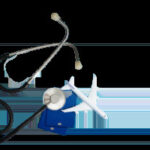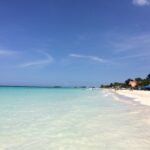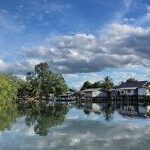Are you planning a trip to Vietnam and curious about the Phu Day Complex? What are the main temples within the Phu Day Complex, and why should you visit them? SIXT.VN is here to guide you through this spiritual landmark, offering seamless travel solutions to enhance your exploration of Vietnamese culture. Discover the beauty and history of Phu Day with our expert travel tips and services.
Contents
- 1. Understanding the Phu Day Complex
- 1.1. Historical Significance
- 1.2. Cultural Importance
- 2. Key Temples Within the Phu Day Complex
- 2.1. Tien Huong Temple (Đền Tiên Hương)
- 2.1.1. Architectural Highlights
- 2.1.2. Spiritual Significance
- 2.2. Giai Oan Temple (Đền Giải Oan)
- 2.2.1. Unique Features
- 2.2.2. Rituals and Beliefs
- 2.3. Tho Son Temple (Đền Thờ Sơn)
- 2.3.1. Location and Scenery
- 2.3.2. Worship Practices
- 2.4. Other Notable Shrines
- 3. Planning Your Visit to the Phu Day Complex
- 3.1. Best Time to Visit
- 3.2. How to Get There
- 3.3. Accommodation Options
- 3.4. What to Wear
- 3.5. Etiquette Tips
- 4. Experiencing the Phu Day Festival
- 4.1. Key Events and Activities
- 4.2. Cultural Significance
- 4.3. Planning Your Visit During the Festival
- 5. The Architecture and Art of the Phu Day Complex
- 5.1. Architectural Styles
- 5.2. Intricate Carvings and Decorations
- 5.3. Symbolism in Art
- 6. Spiritual Significance of the Phu Day Complex
- 6.1. Lieu Hanh: The Mother Goddess
- 6.2. Religious Practices
- 6.3. The Role of the Complex in Vietnamese Folk Beliefs
- 7. Nearby Attractions and Activities
- 7.1. Nam Dinh City
- 7.2. Xuan Thuy National Park
- 7.3. Hai Hau Beach
- 8. Why Choose SIXT.VN for Your Trip to Phu Day?
- 8.1. Convenient Transportation Services
- 8.2. Accommodation Booking
- 8.3. Guided Tours
- 8.4. Comprehensive Travel Packages
- 8.5. 24/7 Customer Support
- 9. Essential Vietnamese Phrases for Your Trip
- 10. Travel Tips for a Smooth Trip to Vietnam
- 10.1. Visa Requirements
- 10.2. Currency and Payment
- 10.3. Health and Safety
- 10.4. Local Customs and Traditions
- 10.5. Stay Connected
- FAQ: Exploring the Phu Day Complex
- Q1: What is the Phu Day Complex known for?
- Q2: How much time should I spend at the Phu Day Complex?
- Q3: Is it necessary to hire a guide for the Phu Day Complex?
- Q4: What should I wear when visiting the Phu Day Complex?
- Q5: Can I take photos inside the temples?
- Q6: Are there any entrance fees for the Phu Day Complex?
- Q7: What is the best way to get to the Phu Day Complex from Hanoi?
- Q8: Are there any accommodations near the Phu Day Complex?
- Q9: What other attractions can I visit near the Phu Day Complex?
- Q10: How can SIXT.VN help me plan my trip to the Phu Day Complex?
1. Understanding the Phu Day Complex
The Phu Day Complex is a significant religious site located in Nam Dinh province, Vietnam. It is a collection of temples and shrines dedicated to Lieu Hanh, one of the Four Immortals in Vietnamese folklore. The complex serves as a vibrant center for spiritual activities and attracts pilgrims and tourists alike. According to the Vietnam National Administration of Tourism, the Phu Day Festival is a major cultural event that showcases traditional rituals and performances.
1.1. Historical Significance
The Phu Day Complex has historical roots dating back to the Le Dynasty. It gained prominence over the centuries as a sacred place honoring Lieu Hanh, a deity revered for her compassion and influence. The architectural style and intricate decorations within the complex reflect the artistic trends of different periods in Vietnamese history.
1.2. Cultural Importance
Culturally, the Phu Day Complex is essential for preserving and promoting Vietnamese folk beliefs. The annual Phu Day Festival, as noted by the Ministry of Culture, Sports, and Tourism, is a testament to the enduring cultural values associated with ancestor worship and local deities. The festival includes various traditional activities such as processions, folk games, and artistic performances.
2. Key Temples Within the Phu Day Complex
The Phu Day Complex comprises several significant temples, each with its unique architecture, history, and spiritual importance. Here are the main temples you should explore:
2.1. Tien Huong Temple (Đền Tiên Hương)
Tien Huong Temple is the central and most important temple in the complex, dedicated to Lieu Hanh. It is renowned for its intricate carvings, ornate decorations, and impressive architecture.
Alt: Exquisite architecture of Tien Huong Temple, the heart of Phu Day Complex, Vietnam
2.1.1. Architectural Highlights
The architecture of Tien Huong Temple showcases traditional Vietnamese design elements, including curved roofs, detailed carvings, and vibrant colors. The main hall houses the statue of Lieu Hanh, adorned with elaborate costumes and jewelry.
2.1.2. Spiritual Significance
As the main temple dedicated to Lieu Hanh, Tien Huong Temple is the focal point for religious ceremonies and festivals. Pilgrims come here to offer prayers, seek blessings, and participate in traditional rituals.
2.2. Giai Oan Temple (Đền Giải Oan)
Giai Oan Temple is another significant temple within the complex, known for its serene atmosphere and beautiful gardens. It is believed that praying here can help resolve grievances and bring peace of mind.
Alt: Peaceful scenery at Giai Oan Temple, offering solace and resolution within the Phu Day Complex, Nam Dinh
2.2.1. Unique Features
Giai Oan Temple stands out with its tranquil setting, featuring lush greenery, ponds, and ancient trees. The temple’s architecture blends seamlessly with the natural surroundings, creating a harmonious environment.
2.2.2. Rituals and Beliefs
Visitors to Giai Oan Temple often engage in rituals aimed at seeking forgiveness and resolving conflicts. The temple is considered a place of spiritual healing and reconciliation.
2.3. Tho Son Temple (Đền Thờ Sơn)
Tho Son Temple, also known as Mother Mountain Temple, is dedicated to the mountain goddess. It is situated on a hill, offering panoramic views of the surrounding landscape.
Alt: Elevated view of Tho Son Temple dedicated to the mountain goddess in the Phu Day Complex
2.3.1. Location and Scenery
The temple’s hilltop location provides breathtaking views, making it a popular spot for both worship and sightseeing. The natural beauty of the area enhances the spiritual experience.
2.3.2. Worship Practices
Devotees visit Tho Son Temple to pay homage to the mountain goddess, seeking her blessings for prosperity and protection. The temple is adorned with statues and offerings, reflecting the local beliefs and customs.
2.4. Other Notable Shrines
In addition to the main temples, the Phu Day Complex includes several smaller shrines and altars dedicated to various deities and historical figures. These sites contribute to the overall spiritual richness of the complex.
3. Planning Your Visit to the Phu Day Complex
Visiting the Phu Day Complex requires some planning to ensure a smooth and enriching experience. Here are essential tips for your visit:
3.1. Best Time to Visit
The best time to visit the Phu Day Complex is during the Phu Day Festival, which typically takes place in the third lunar month (usually April or May). According to the Vietnam Tourism Board, this is when the complex comes alive with vibrant celebrations and cultural performances. Outside the festival period, the complex is less crowded, offering a more peaceful experience.
3.2. How to Get There
The Phu Day Complex is located in Kim Thai Commune, Vu Ban District, Nam Dinh Province, about 90 km southeast of Hanoi. You can reach the complex by:
- Car/Taxi: The most convenient way to travel is by hiring a car or taxi from Hanoi. The journey takes approximately 2-3 hours.
- Bus: Several buses operate from Hanoi to Nam Dinh City. From there, you can take a local bus or taxi to the Phu Day Complex. SIXT.VN provides reliable transportation services, including airport transfers and private car hires, ensuring a hassle-free journey.
3.3. Accommodation Options
While there are limited accommodation options directly within the Phu Day Complex, Nam Dinh City offers a range of hotels and guesthouses. Consider staying in Nam Dinh for more choices and amenities. SIXT.VN can assist you in booking suitable accommodations based on your preferences and budget.
3.4. What to Wear
When visiting the Phu Day Complex, it is important to dress respectfully. Avoid wearing revealing clothing and opt for modest attire. Covering your shoulders and knees is recommended.
3.5. Etiquette Tips
- Be Respectful: Show respect for the religious practices and local customs.
- Quiet Atmosphere: Maintain a quiet and peaceful demeanor within the temples.
- Photography: Ask for permission before taking photos, especially during ceremonies.
- Offerings: If you wish to make offerings, follow the guidance of the temple staff.
4. Experiencing the Phu Day Festival
The Phu Day Festival is a major cultural event that showcases the rich traditions and spiritual significance of the Phu Day Complex. It attracts thousands of visitors each year.
4.1. Key Events and Activities
The festival features a variety of traditional activities, including:
- Processions: Elaborate processions with colorful costumes and traditional music.
- Folk Games: Traditional games and competitions that reflect local customs.
- Artistic Performances: Performances of traditional music, dance, and theater.
- Religious Rituals: Ceremonies and rituals to honor Lieu Hanh and other deities.
4.2. Cultural Significance
The Phu Day Festival is not only a religious event but also a celebration of Vietnamese culture and heritage. It provides an opportunity for locals and visitors to connect with their roots and appreciate the country’s rich traditions. According to UNESCO, the preservation of such cultural festivals is vital for maintaining cultural diversity and promoting intercultural dialogue.
4.3. Planning Your Visit During the Festival
If you plan to visit the Phu Day Complex during the festival, it is essential to book your accommodations and transportation in advance. The complex can get very crowded, so be prepared for large crowds and potential delays. SIXT.VN offers comprehensive travel packages that include transportation, accommodation, and guided tours, ensuring a seamless and enjoyable experience.
5. The Architecture and Art of the Phu Day Complex
The Phu Day Complex is renowned for its unique architecture and intricate artwork, reflecting the artistic styles of different periods in Vietnamese history.
5.1. Architectural Styles
The architecture of the temples within the Phu Day Complex showcases traditional Vietnamese design elements, including:
- Curved Roofs: Elegant curved roofs adorned with intricate carvings and decorations.
- Wooden Structures: Elaborate wooden structures with detailed carvings of dragons, phoenixes, and other mythical creatures.
- Courtyards: Open courtyards that provide spaces for ceremonies and gatherings.
- Gardens: Beautiful gardens with lush greenery, ponds, and ancient trees.
5.2. Intricate Carvings and Decorations
The temples are adorned with intricate carvings and decorations that depict scenes from Vietnamese folklore, religious stories, and historical events. These carvings showcase the skill and craftsmanship of Vietnamese artisans.
5.3. Symbolism in Art
The artwork within the Phu Day Complex is rich in symbolism, with each image and motif carrying a specific meaning. For example, dragons symbolize power and prosperity, while phoenixes represent rebirth and renewal. Understanding these symbols can enhance your appreciation of the complex’s cultural and spiritual significance.
6. Spiritual Significance of the Phu Day Complex
The Phu Day Complex is a significant spiritual center for the worship of Lieu Hanh and other deities. It plays a vital role in preserving and promoting Vietnamese folk beliefs.
6.1. Lieu Hanh: The Mother Goddess
Lieu Hanh is one of the Four Immortals in Vietnamese folklore, revered as the Mother Goddess. She is believed to have the power to grant blessings, protect against misfortune, and bring prosperity. According to Vietnamese legends, Lieu Hanh descended to earth to experience human life and help those in need.
6.2. Religious Practices
Devotees visit the Phu Day Complex to offer prayers, make offerings, and participate in religious rituals. They seek blessings from Lieu Hanh for health, wealth, and happiness. The complex is also a place for spiritual healing and reconciliation.
6.3. The Role of the Complex in Vietnamese Folk Beliefs
The Phu Day Complex plays a crucial role in preserving and promoting Vietnamese folk beliefs. It serves as a center for religious activities and a place for people to connect with their spiritual roots. The complex is also a symbol of Vietnamese cultural identity.
7. Nearby Attractions and Activities
While visiting the Phu Day Complex, consider exploring other nearby attractions and activities to enhance your travel experience.
7.1. Nam Dinh City
Nam Dinh City is the capital of Nam Dinh Province and offers a range of attractions, including:
- Co Le Pagoda: A beautiful pagoda with unique architecture and serene gardens.
- Tran Temple: A historical temple dedicated to the Tran Dynasty emperors.
- Nam Dinh Museum: A museum that showcases the history and culture of Nam Dinh Province.
7.2. Xuan Thuy National Park
Xuan Thuy National Park is a coastal wetland area known for its rich biodiversity. It is a popular destination for birdwatching and nature walks.
7.3. Hai Hau Beach
Hai Hau Beach is a scenic beach area that offers opportunities for swimming, sunbathing, and enjoying fresh seafood.
8. Why Choose SIXT.VN for Your Trip to Phu Day?
Planning a trip to the Phu Day Complex can be overwhelming, especially for international travelers. SIXT.VN offers comprehensive travel services to ensure a seamless and enjoyable experience.
8.1. Convenient Transportation Services
SIXT.VN provides reliable transportation services, including:
- Airport Transfers: Hassle-free airport transfers from Hanoi to Nam Dinh.
- Private Car Hire: Private car hire services for flexible travel within Nam Dinh Province.
- Local Transportation: Assistance with local transportation options, such as buses and taxis.
8.2. Accommodation Booking
SIXT.VN can assist you in booking suitable accommodations in Nam Dinh City, based on your preferences and budget. We offer a range of options, from budget-friendly guesthouses to luxury hotels.
8.3. Guided Tours
SIXT.VN offers guided tours of the Phu Day Complex and other attractions in Nam Dinh Province. Our experienced guides can provide valuable insights into the history, culture, and spiritual significance of these sites.
8.4. Comprehensive Travel Packages
SIXT.VN offers comprehensive travel packages that include transportation, accommodation, and guided tours. These packages are designed to provide a hassle-free and enriching travel experience.
8.5. 24/7 Customer Support
SIXT.VN provides 24/7 customer support to assist you with any questions or concerns. Our dedicated team is always available to ensure your trip is smooth and enjoyable.
9. Essential Vietnamese Phrases for Your Trip
Learning a few basic Vietnamese phrases can enhance your interactions with locals and make your trip more enjoyable. Here are some essential phrases:
| Phrase | Vietnamese | Pronunciation |
|---|---|---|
| Hello | Xin chào | Seen chow |
| Thank you | Cảm ơn | Gahm uhn |
| You’re welcome | Không có gì | Khong koh zee |
| Excuse me | Xin lỗi | Seen loy |
| How much? | Bao nhiêu? | Baow nyeuw |
| Yes | Vâng | Vuhng |
| No | Không | Khong |
| I don’t understand | Tôi không hiểu | Toy khong hyew |
| Where is…? | … ở đâu? | … uh dow? |
| Do you speak English? | Bạn nói tiếng Anh? | Bahn noy tyeng Anh? |
10. Travel Tips for a Smooth Trip to Vietnam
Here are some additional travel tips to ensure a smooth and enjoyable trip to Vietnam:
10.1. Visa Requirements
Check the visa requirements for your nationality before traveling to Vietnam. Many nationalities can enter Vietnam visa-free for a certain period, while others may need to apply for a visa in advance.
10.2. Currency and Payment
The official currency of Vietnam is the Vietnamese Dong (VND). It is advisable to carry some cash for small purchases and local markets. Credit cards are accepted in larger establishments, but it is always a good idea to check beforehand.
10.3. Health and Safety
Consult your doctor about necessary vaccinations and health precautions before traveling to Vietnam. It is also advisable to purchase travel insurance that covers medical expenses and emergencies. Be aware of your surroundings and take precautions against petty theft, especially in crowded areas.
10.4. Local Customs and Traditions
Respect local customs and traditions by dressing modestly when visiting religious sites, removing your shoes before entering someone’s home, and avoiding public displays of affection.
10.5. Stay Connected
Purchase a local SIM card or rent a portable Wi-Fi device to stay connected during your trip. This will allow you to access maps, translation apps, and other useful resources.
FAQ: Exploring the Phu Day Complex
Q1: What is the Phu Day Complex known for?
The Phu Day Complex is best known as a significant religious site dedicated to Lieu Hanh, one of Vietnam’s Four Immortals. It’s famous for its beautiful temples, spiritual atmosphere, and the vibrant Phu Day Festival.
Q2: How much time should I spend at the Phu Day Complex?
Plan to spend at least 3-4 hours to explore the main temples and soak in the serene atmosphere. If you visit during the Phu Day Festival, you might want to allocate an entire day to experience all the cultural activities.
Q3: Is it necessary to hire a guide for the Phu Day Complex?
While not mandatory, hiring a guide can greatly enhance your visit. A knowledgeable guide can provide insights into the history, architecture, and spiritual significance of the complex. SIXT.VN offers experienced guides who can enrich your experience.
Q4: What should I wear when visiting the Phu Day Complex?
Dress modestly and respectfully. Avoid wearing revealing clothing and opt for attire that covers your shoulders and knees. This shows respect for the religious practices and local customs.
Q5: Can I take photos inside the temples?
Photography is generally allowed, but it’s always a good idea to ask for permission, especially during religious ceremonies. Be respectful and avoid using flash photography, which can be disruptive.
Q6: Are there any entrance fees for the Phu Day Complex?
Yes, there is a small entrance fee to access the Phu Day Complex. The fee helps maintain the site and preserve its cultural heritage.
Q7: What is the best way to get to the Phu Day Complex from Hanoi?
The most convenient way is to hire a car or taxi from Hanoi, which takes about 2-3 hours. Alternatively, you can take a bus to Nam Dinh City and then a local bus or taxi to the complex. SIXT.VN offers reliable transportation services for a hassle-free journey.
Q8: Are there any accommodations near the Phu Day Complex?
While there are limited accommodations directly within the complex, Nam Dinh City offers a range of hotels and guesthouses. SIXT.VN can assist you in booking suitable accommodations based on your preferences and budget.
Q9: What other attractions can I visit near the Phu Day Complex?
Nearby attractions include Nam Dinh City, Co Le Pagoda, Tran Temple, Xuan Thuy National Park, and Hai Hau Beach. These sites offer a diverse range of cultural and natural experiences.
Q10: How can SIXT.VN help me plan my trip to the Phu Day Complex?
SIXT.VN offers comprehensive travel services, including transportation, accommodation booking, guided tours, and comprehensive travel packages. We provide 24/7 customer support to ensure a seamless and enjoyable travel experience. Contact us today to start planning your trip! Address: 260 Cau Giay, Hanoi, Vietnam. Hotline/Whatsapp: +84 986 244 358. Website: SIXT.VN.
Visiting the Phu Day Complex is a remarkable journey into the heart of Vietnamese culture and spirituality. With SIXT.VN, your trip can be seamless, enjoyable, and deeply enriching. Let us take care of the details, so you can focus on experiencing the beauty and history of this incredible destination.
Ready to explore the Phu Day Complex? Contact SIXT.VN today and let us help you plan your perfect Vietnamese adventure!







